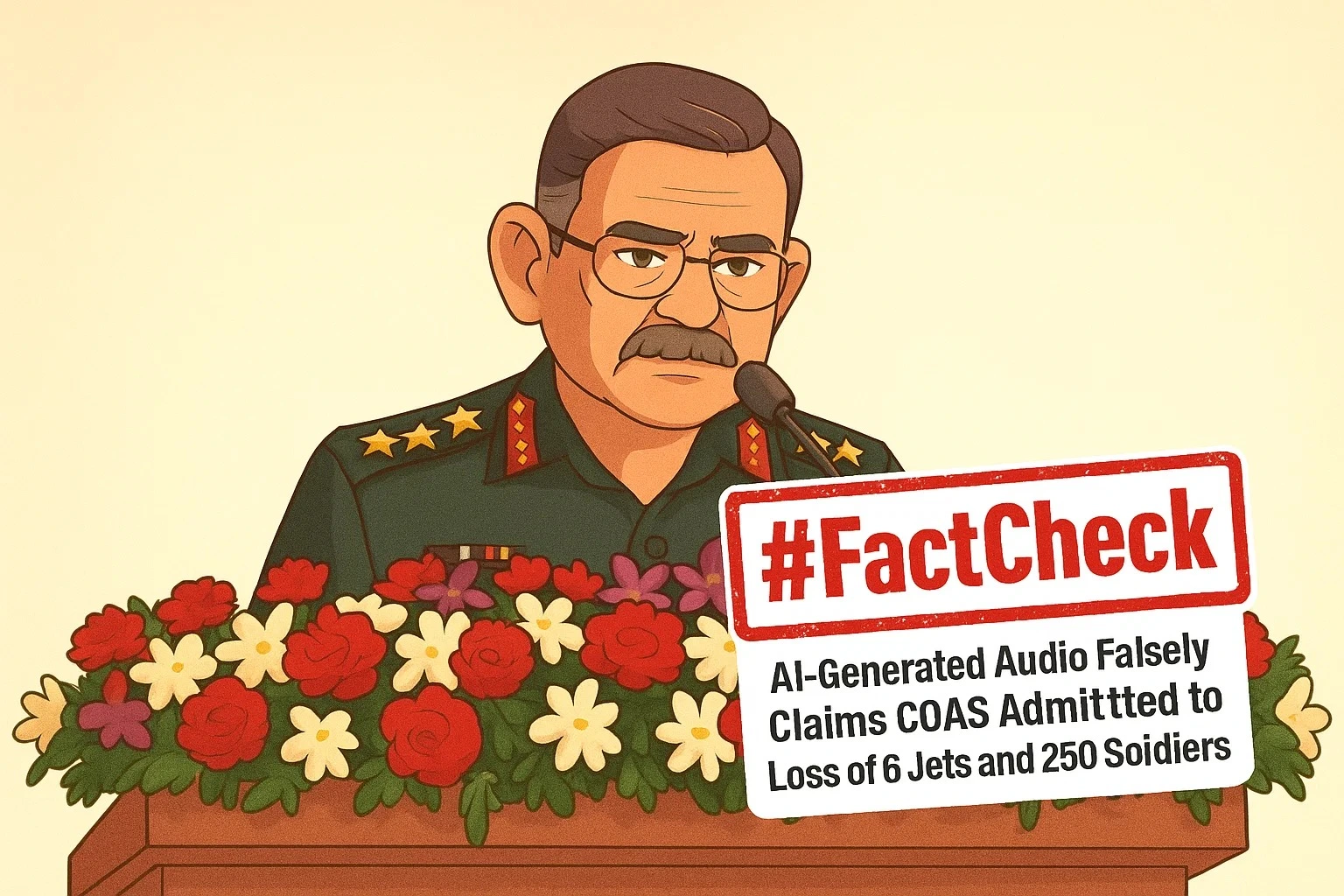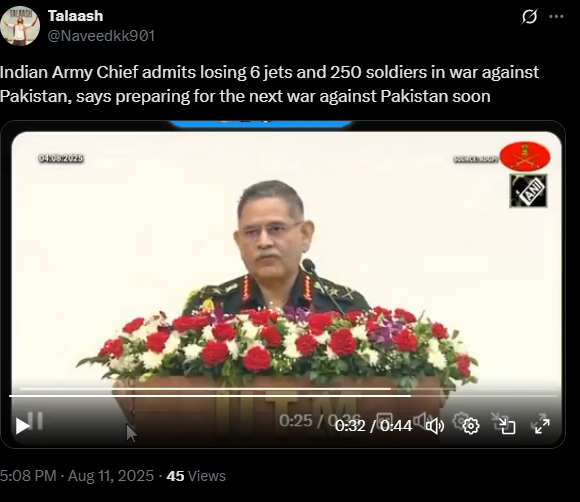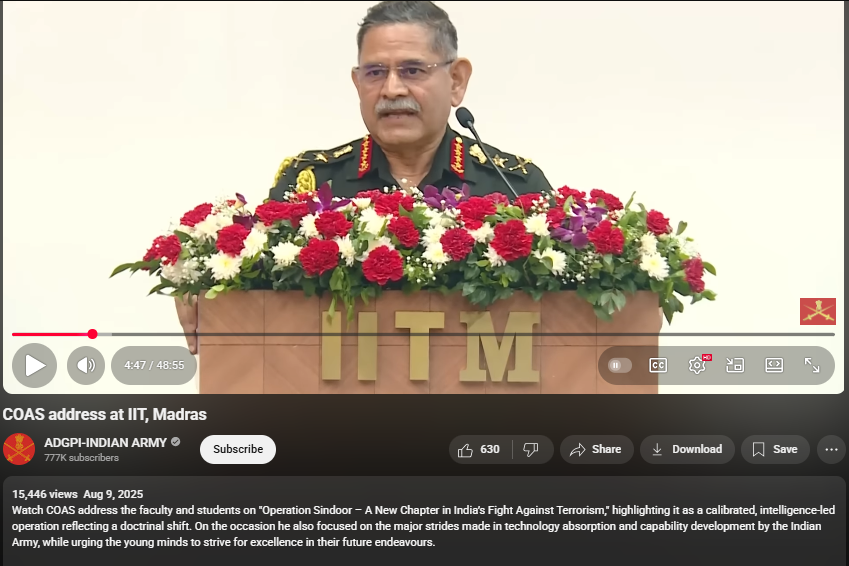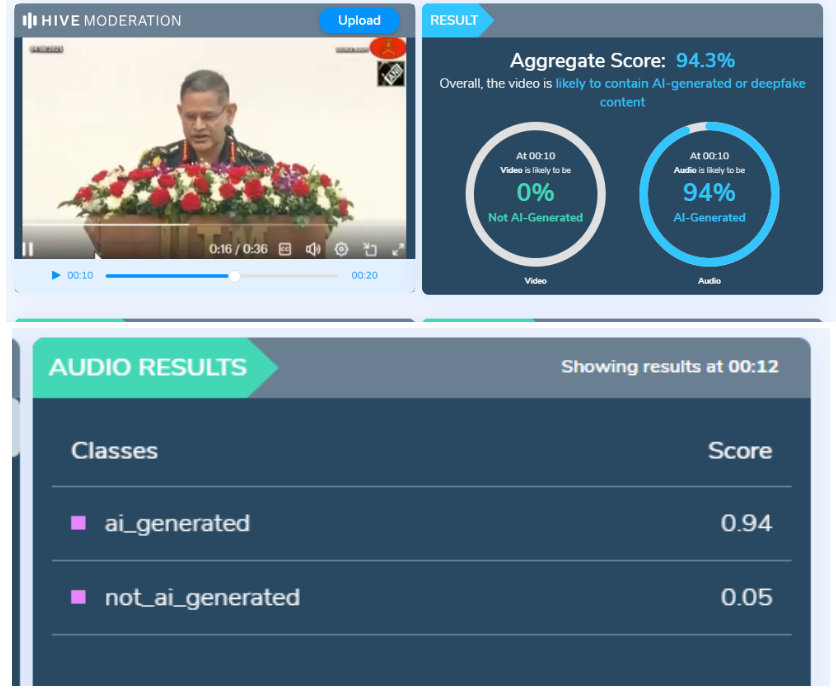#Factcheck-Allu Arjun visits Shiva temple after success of Pushpa 2? No, image is from 2017
Executive Summary:
Recently, a viral post on social media claiming that actor Allu Arjun visited a Shiva temple to pray in celebration after the success of his film, PUSHPA 2. The post features an image of him visiting the temple. However, an investigation has determined that this photo is from 2017 and does not relate to the film's release.

Claims:
The claim states that Allu Arjun recently visited a Shiva temple to express his thanks for the success of Pushpa 2, featuring a photograph that allegedly captures this moment.

Fact Check:
The image circulating on social media, that Allu Arjun visited a Shiva temple to celebrate the success of Pushpa 2, is misleading.
After conducting a reverse image search, we confirmed that this photograph is from 2017, taken during the actor's visit to the Tirumala Temple for a personal event, well before Pushpa 2 was ever announced. The context has been altered to falsely connect it to the film's success. Additionally, there is no credible evidence or recent reports to support the claim that Allu Arjun visited a temple for this specific reason, making the assertion entirely baseless.

Before sharing viral posts, take a brief moment to verify the facts. Misinformation spreads quickly and it’s far better to rely on trusted fact-checking sources.
Conclusion:
The claim that Allu Arjun visited a Shiva temple to celebrate the success of Pushpa 2 is false. The image circulating is actually from an earlier time. This situation illustrates how misinformation can spread when an old photo is used to construct a misleading story. Before sharing viral posts, take a moment to verify the facts. Misinformation spreads quickly, and it is far better to rely on trusted fact-checking sources.
- Claim: The image claims Allu Arjun visited Shiva temple after Pushpa 2’s success.
- Claimed On: Facebook
- Fact Check: False and Misleading
Related Blogs

Disclaimer:
This report is based on extensive research conducted by CyberPeace Research using publicly available information, and advanced analytical techniques. The findings, interpretations, and conclusions presented are based on the data available at the time of study and aim to provide insights into global ransomware trends.
The statistics mentioned in this report are specific to the scope of this research and may vary based on the scope and resources of other third-party studies. Additionally, all data referenced is based on claims made by threat actors and does not imply confirmation of the breach by CyberPeace. CyberPeace includes this detail solely to provide factual transparency and does not condone any unlawful activities. This information is shared only for research purposes and to spread awareness. CyberPeace encourages individuals and organizations to adopt proactive cybersecurity measures to protect against potential threats.
CyberPeace Research does not claim to have identified or attributed specific cyber incidents to any individual, organization, or nation-state beyond the scope of publicly observable activities and available information. All analyses and references are intended for informational and awareness purposes only, without any intention to defame, accuse, or harm any entity.
While every effort has been made to ensure accuracy, CyberPeace Research is not liable for any errors, omissions, subsequent interpretations and any unlawful activities of the findings by third parties. The report is intended to inform and support cybersecurity efforts globally and should be used as a guide to foster proactive measures against cyber threats.
Executive Summary:
The 2024 ransomware landscape reveals alarming global trends, with 166 Threat Actor Groups leveraging 658 servers/underground resources and mirrors to execute 5,233 claims across 153 countries. Monthly fluctuations in activity indicate strategic, cyclical targeting, with peak periods aligned with vulnerabilities in specific sectors and regions. The United States was the most targeted nation, followed by Canada, the UK, Germany, and other developed countries, with the northwestern hemisphere experiencing the highest concentration of attacks. Business Services and Healthcare bore the brunt of these operations due to their high-value data, alongside targeted industries such as Pharmaceuticals, Mechanical, Metal, Electronics, and Government-related professional firms. Retail, Financial, Technology, and Energy sectors were also significantly impacted.
This research was conducted by CyberPeace Research using a systematic modus operandi, which included advanced OSINT (Open-Source Intelligence) techniques, continuous monitoring of Ransomware Group activities, and data collection from 658 servers and mirrors globally. The team utilized data scraping, pattern analysis, and incident mapping to track trends and identify hotspots of ransomware activity. By integrating real-time data and geographic claims, the research provided a comprehensive view of sectoral and regional impacts, forming the basis for actionable insights.
The findings emphasize the urgent need for proactive Cybersecurity strategies, robust defenses, and global collaboration to counteract the evolving and persistent threats posed by ransomware.
Overview:
This report provides insights into ransomware activities monitored throughout 2024. Data was collected by observing 166 Threat Actor Groups using ransomware technologies across 658 servers/underground resources and mirrors, resulting in 5,233 claims worldwide. The analysis offers a detailed examination of global trends, targeted sectors, and geographical impact.
Top 10 Threat Actor Groups:
The ransomware group ‘ransomhub’ has emerged as the leading threat actor, responsible for 527 incidents worldwide. Following closely are ‘lockbit3’ with 522 incidents and ‘play’ with 351. Other Groups are ‘akira’, ‘hunters’, ‘medusa’, ‘blackbasta’, ‘qilin’, ‘bianlian’, ‘incransom’. These groups usually employ advanced tactics to target critical sectors, highlighting the urgent need for robust cybersecurity measures to mitigate their impact and protect organizations from such threats.

Monthly Ransomware Incidents:
In January 2024, the value began at 284, marking the lowest point on the chart. The trend rose steadily in the subsequent months, reaching its first peak at 557 in May 2024. However, after this peak, the value dropped sharply to 339 in June. A gradual recovery follows, with the value increasing to 446 by August. September sees another decline to 389, but a sharp rise occurs afterward, culminating in the year’s highest point of 645 in November. The year concludes with a slight decline, ending at 498 in December 2024 (till 28th of December).

Top 10 Targeted Countries:
- The United States consistently topped the list as the primary target probably due to its advanced economic and technological infrastructure.
- Other heavily targeted nations include Canada, UK, Germany, Italy, France, Brazil, Spain, and India.
- A total of 153 countries reported ransomware attacks, reflecting the global scale of these cyber threats

Top Affected Sectors:
- Business Services and Healthcare faced the brunt of ransomware threat due to the sensitive nature of their operations.
- Specific industries under threats:
- Pharmaceutical, Mechanical, Metal, and Electronics industries.
- Professional firms within the Government sector.
- Other sectors:
- Retail, Financial, Technology, and Energy sectors were also significant targets.

Geographical Impact:
The continuous and precise OSINT(Open Source Intelligence) work on the platform, performed as a follow-up action to data scraping, allows a complete view of the geography of cyber attacks based on their claims. The northwestern region of the world appears to be the most severely affected by Threat Actor groups. The figure below clearly illustrates the effects of this geographic representation on the map.

Ransomware Threat Trends in India:
In 2024, the research identified 98 ransomware incidents impacting various sectors in India, marking a 55% increase compared to the 63 incidents reported in 2023. This surge highlights a concerning trend, as ransomware groups continue to target India's critical sectors due to its growing digital infrastructure and economic prominence.

Top Threat Actors Group Targeted India:
Among the following threat actors ‘killsec’ is the most frequent threat. ‘lockbit3’ follows as the second most prominent threat, with significant but lower activity than killsec. Other groups, such as ‘ransomhub’, ‘darkvault’, and ‘clop’, show moderate activity levels. Entities like ‘bianlian’, ‘apt73/bashe’, and ‘raworld’ have low frequencies, indicating limited activity. Groups such as ‘aps’ and ‘akira’ have the lowest representation, indicating minimal activity. The chart highlights a clear disparity in activity levels among these threats, emphasizing the need for targeted cybersecurity strategies.

Top Impacted Sectors in India:
The pie chart illustrates the distribution of incidents across various sectors, highlighting that the industrial sector is the most frequently targeted, accounting for 75% of the total incidents. This is followed by the healthcare sector, which represents 12% of the incidents, making it the second most affected. The finance sector accounts for 10% of the incidents, reflecting a moderate level of targeting. In contrast, the government sector experiences the least impact, with only 3% of the incidents, indicating minimal targeting compared to the other sectors. This distribution underscores the critical need for enhanced cybersecurity measures, particularly in the industrial sector, while also addressing vulnerabilities in healthcare, finance, and government domains.

Month Wise Incident Trends in India:
The chart indicates a fluctuating trend with notable peaks in May and October, suggesting potential periods of heightened activity or incidents during these months. The data starts at 5 in January and drops to its lowest point, 2, in February. It then gradually increases to 6 in March and April, followed by a sharp rise to 14 in May. After peaking in May, the metric significantly declines to 4 in June but starts to rise again, reaching 7 in July and 8 in August. September sees a slight dip to 5 before the metric spikes dramatically to its highest value, 24, in October. Following this peak, the count decreases to 10 in November and then drops further to 7 in December.

CyberPeace Advisory:
- Implement Data Backup and Recovery Plans: Backups are your safety net. Regularly saving copies of your important data ensures you can bounce back quickly if ransomware strikes. Make sure these backups are stored securely—either offline or in a trusted cloud service—to avoid losing valuable information or facing extended downtime.
- Enhance Employee Awareness and Training: People often unintentionally open the door to ransomware. By training your team to spot phishing emails, social engineering tricks, and other scams, you empower them to be your first line of defense against attacks.
- Adopt Multi-Factor Authentication (MFA): Think of MFA as locking your door and adding a deadbolt. Even if attackers get hold of your password, they’ll still need that second layer of verification to break in. It’s an easy and powerful way to block unauthorized access.
- Utilize Advanced Threat Detection Tools: Smart tools can make a world of difference. AI-powered systems and behavior-based monitoring can catch ransomware activity early, giving you a chance to stop it in its tracks before it causes real damage.
- Conduct Regular Vulnerability Assessments: You can’t fix what you don’t know is broken. Regularly checking for vulnerabilities in your systems helps you identify weak spots. By addressing these issues proactively, you can stay one step ahead of attackers.
Conclusion:
The 2024 ransomware landscape reveals the critical need for proactive cybersecurity strategies. High-value sectors and technologically advanced regions remain the primary targets, emphasizing the importance of robust defenses. As we move into 2025, it is crucial to anticipate the evolution of ransomware tactics and adopt forward-looking measures to address emerging threats.
Global collaboration, continuous innovation in cybersecurity technologies, and adaptive strategies will be imperative to counteract the persistent and evolving threats posed by ransomware activities. Organizations and governments must prioritize preparedness and resilience, ensuring that lessons learned in 2024 are applied to strengthen defenses and minimize vulnerabilities in the year ahead.

Tech News overview
Recently, the TRAI has passed some recommendations that benefit the telecommunications industry in India. The suggestion is to lower the entry fees and bank guarantees on the 26th of July 20, 2022. Then wrote a few consulting papers, countering comments by the stakeholders of various companies.
In a significant move, TRAI (Telecom Regulatory Authority of India) has proposed spacious changes in terms of entry fees and bank guarantees in the telecom sector. These endorsements have been abeyant to escort the new era of competition, investment, and innovation, reshaping India’s telecommunication landscape.
Proposal Points by TRAI to telecom companies:
As we dive into considering the recommendations by TRAI into the crucial aspects of the telecom industry, deliberate about the significance of entry fees, the importance of banks, and the guarantees.
- Entry fees: Entry fees are the advance key point that upholds the charges that telecom companies pay to the government when they want to offer services to the civilians of the country. The amount they pay is quite hefty and usually non-refundable.
- Bank guarantee: An important factor that is also a type of security, the financial security that assures the telecom companies to fulfil their financial obligations and follow the regulations and policy conditions specified in their license agreement.
- TRAI roleplay: The Telecom Regulatory Authority of India is an authority responsible for supervising the telecom industry in the country. Making sure that the regulations and recommendations such as entry fees and bank guarantees are working in the proper way or not, a supervision of such things.
- Expected outcomes: TRAI focuses on reducing the entry fees for various types of licenses in the other telecom sector. This step encourages other new telecom operators to enter the market and increase the fair price and investment, which leads to enhancing the competition.
- Consolidating Bank guarantees: TRAI also proposed an amalgamation of bank guarantees, which means telecom companies are required to maintain separate guarantees for different business licenses, which makes business doing sectors an easy environment.
- No entry fee at the time of License Renewal: Recommendations by TRAI by not charging any entry fees when telecom operators renew their licenses. This step can reduce the financial burden on both existing and new entrants,, specifically for UL(VNO)license shareholders.
Reshaping the telecom panorama:
Recommendation by TRAI that can potentially help in reshaping the Telecoms landscape in India in various aspects:
- Increment in healthy Competition: By reducing the entry fees, TRAI would be creating a platform profitable and affordable for new market players in India.
- Market enlargement: Lowering the entry fees might lead to the participation of new entrants, including regional and smaller players,, to get involved in the telecom industry.
- Due to the market expansion, the outcomes can potentially lead to improved access to telecom services in underdeveloped areas and regions and contribute to digital inclusion.
- Job Recruitment: The evolution in the telecom industry due to new operators and increased investment can lead to job uplift in both telecom and industries related to technological infrastructure.
- Choice of preference: As there is a rise in competition, consumers are likely to have many choices when it comes to telecom service providers. The consumers get to select from a wider range of services, leading to better value for money and quality of service.
- Quality of service: With increased competition and a hefty amount of investment, telecom operators have a spur to enhance the quality of service.
Conclusion:
In conclusion, TRAIs proposal on lowering the entry fees and bank guarantee for financial services marks a significant milestone in India’s telecom industry. These essential changes hold the promise of fostering competition, investment, a platform for new entrants, quality of service, wider range of platforms for selection. As these advance suggestions take place, in telecom industry in India is on a new threshold of an existing transformation that could reevaluate the way we communicate and connect.
Reference:

Executive Summary:
A viral video (archive link) claims General Upendra Dwivedi, Chief of Army Staff (COAS), admitted to losing six Air Force jets and 250 soldiers during clashes with Pakistan. Verification revealed the footage is from an IIT Madras speech, with no such statement made. AI detection confirmed parts of the audio were artificially generated.
Claim:
The claim in question is that General Upendra Dwivedi, Chief of Army Staff (COAS), admitted to losing six Indian Air Force jets and 250 soldiers during recent clashes with Pakistan.

Fact Check:
Upon conducting a reverse image search on key frames from the video, it was found that the original footage is from IIT Madras, where the Chief of Army Staff (COAS) was delivering a speech. The video is available on the official YouTube channel of ADGPI – Indian Army, published on 9 August 2025, with the description:
“Watch COAS address the faculty and students on ‘Operation Sindoor – A New Chapter in India’s Fight Against Terrorism,’ highlighting it as a calibrated, intelligence-led operation reflecting a doctrinal shift. On the occasion, he also focused on the major strides made in technology absorption and capability development by the Indian Army, while urging young minds to strive for excellence in their future endeavours.”
A review of the full speech revealed no reference to the destruction of six jets or the loss of 250 Army personnel. This indicates that the circulating claim is not supported by the original source and may contribute to the spread of misinformation.

Further using AI Detection tools like Hive Moderation we found that the voice is AI generated in between the lines.

Conclusion:
The claim is baseless. The video is a manipulated creation that combines genuine footage of General Dwivedi’s IIT Madras address with AI-generated audio to fabricate a false narrative. No credible source corroborates the alleged military losses.
- Claim: AI-Generated Audio Falsely Claims COAS Admitted to Loss of 6 Jets and 250 Soldiers
- Claimed On: Social Media
- Fact Check: False and Misleading


